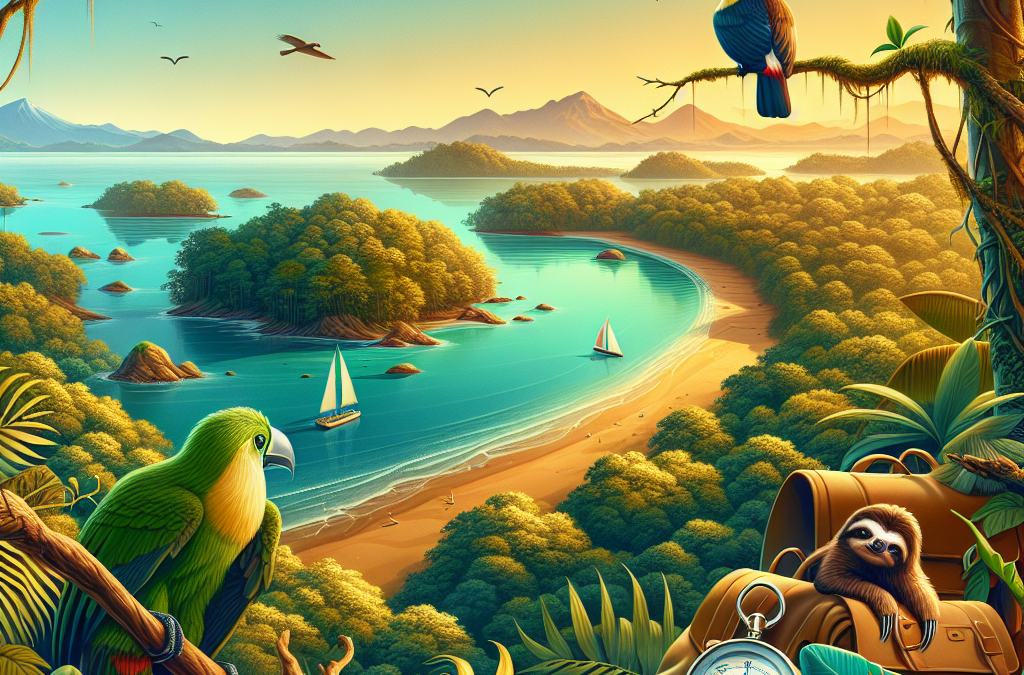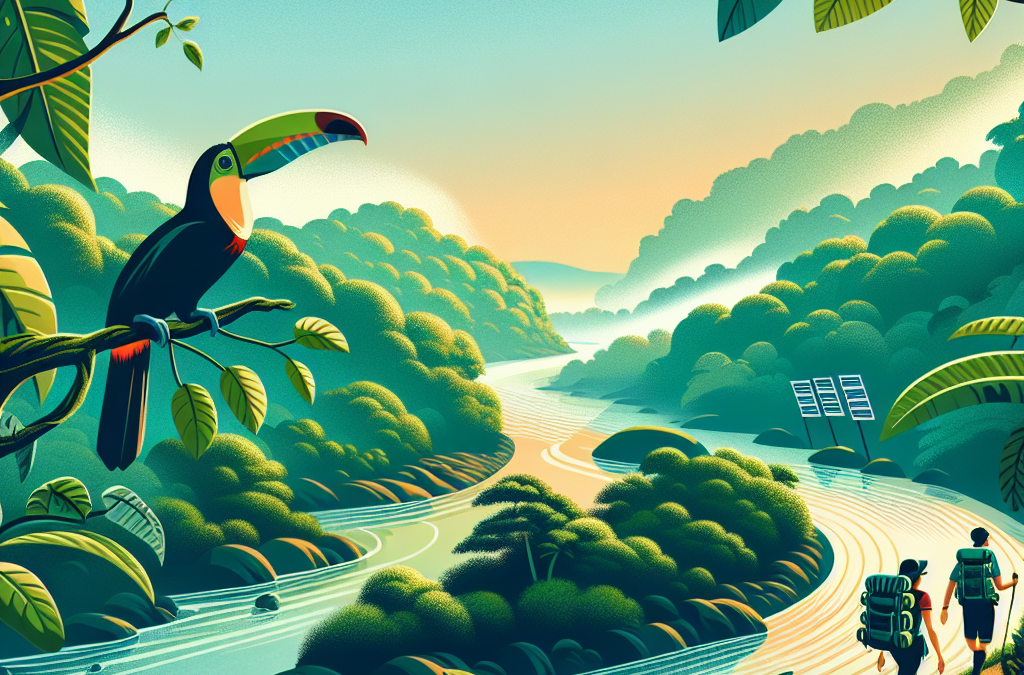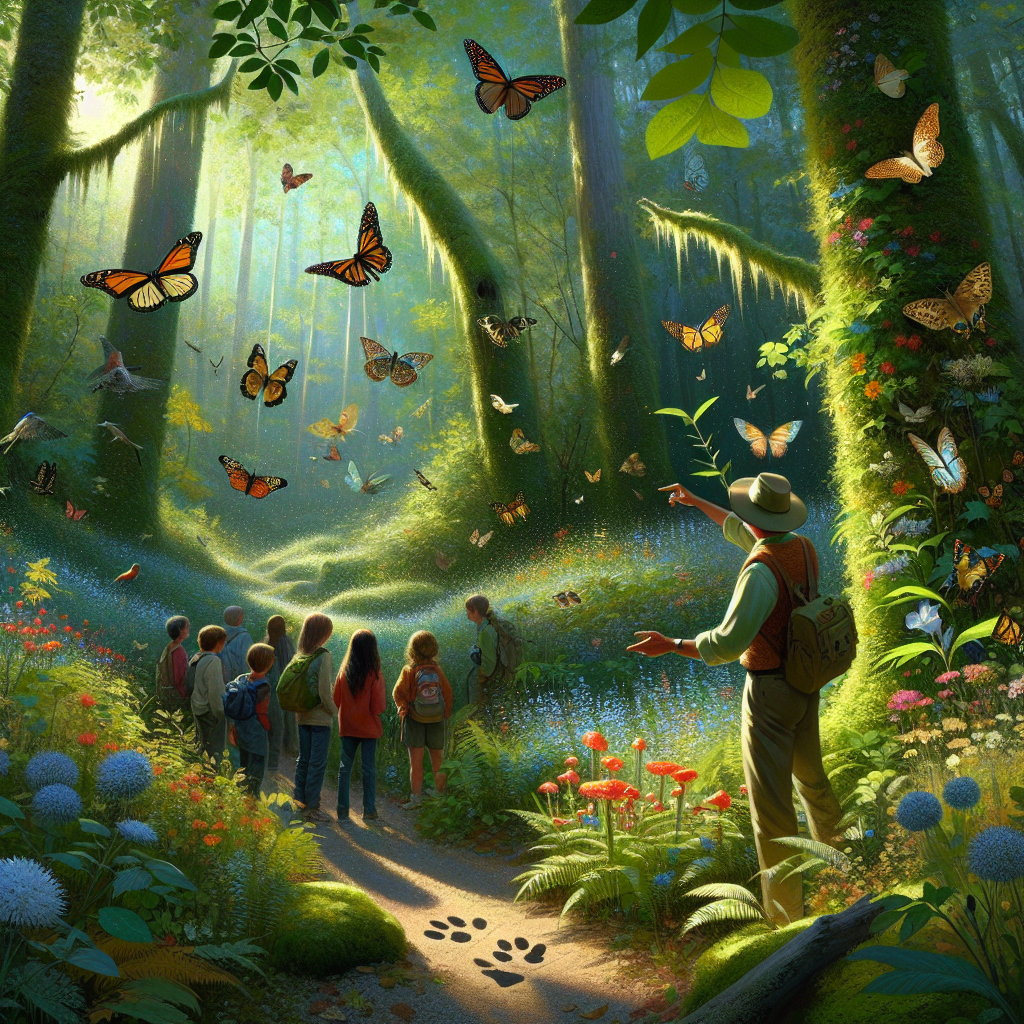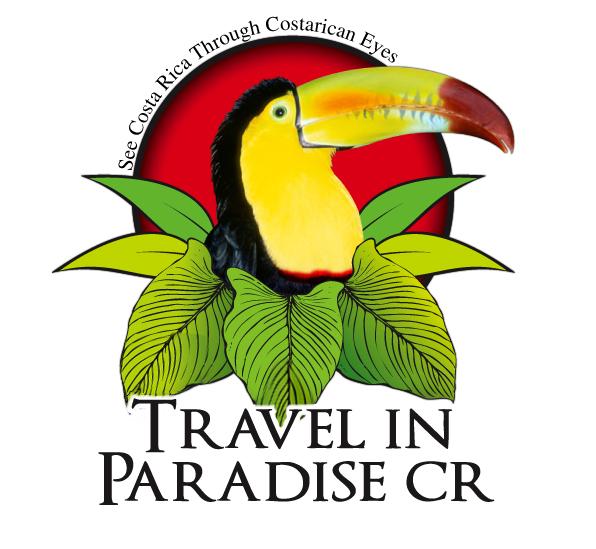
от | Oct 30, 2025 | Uncategorized
How to Choose the Best Costa Rica Travel Agency
Dreaming of lush rainforests, serene beaches, and vibrant wildlife? Costa Rica is calling your name! But, planning a trip to this tropical paradise can be a bit overwhelming. Fear not! Choosing the right travel agency can make all the difference. Let’s dive into how you can select the best Costa Rica travel agency for an unforgettable adventure. 🌴✈️
Table of Contents
1. Understanding Your Travel Needs
2. Researching Travel Agencies
3. Checking Reviews and Testimonials
4. Considering Eco-Friendly Options
5. Evaluating Customer Service
6. Conclusion
7. FAQs
Understanding Your Travel Needs
Before you even start looking for a travel agency, it’s important to understand what you want from your Costa Rica trip. Are you seeking a thrilling adventure filled with zip-lining and white-water rafting, or do you prefer a relaxing getaway with yoga retreats and spa treatments? Knowing your preferences will help you narrow down agencies that specialize in your type of travel.
Researching Travel Agencies
The digital age makes it easier than ever to research travel agencies. Start with a quick online search using keywords like “best Costa Rica travel agency” or “Costa Rica eco-tour specialists.” Look for agencies with a strong online presence and clear, informative websites that highlight their tour packages, pricing, and unique offerings.
Checking Reviews and Testimonials 📣
One of the best ways to gauge the reliability of a travel agency is by reading reviews and testimonials. Platforms like TripAdvisor, Google Reviews, and even social media pages can provide insights into the experiences of past travelers. Look for consistent themes in reviews, such as excellent customer service, knowledgeable guides, and well-organized tours.
Considering Eco-Friendly Options 🌱
Costa Rica is renowned for its commitment to sustainability and eco-tourism. If protecting the environment is important to you, seek out travel agencies that prioritize eco-friendly practices. Look for certifications like the CST (Certification for Sustainable Tourism), which indicates a company’s dedication to environmental responsibility.
Evaluating Customer Service 🤝
Great customer service can enhance your travel experience significantly. Reach out to potential travel agencies with questions about their tours, flexibility, and booking process. Pay attention to their responsiveness and willingness to assist you. A friendly, helpful team can be a good indicator of the quality of service you can expect during your trip.
Conclusion
Choosing the best travel agency for your Costa Rica adventure involves a bit of research and self-reflection. By understanding your travel preferences, researching potential agencies, and evaluating their reviews, eco-credentials, and customer service, you’ll be well on your way to an amazing trip. Remember, a great travel agency can turn your dream vacation into a reality. Happy travels! 🌺
FAQs
1. How far in advance should I book a Costa Rica tour?
Booking 3-6 months in advance is ideal, especially if you plan to travel during peak seasons like December to April.
2. Can travel agencies help customize my itinerary?
Absolutely! Most travel agencies offer customizable packages to suit your interests and needs. Don’t hesitate to ask for adjustments.
3. What should I look for in a travel agency’s website?
Look for clear information about tour packages, pricing, cancellation policies, and contact details. A user-friendly site often reflects a well-organized agency.
4. Is travel insurance necessary for a trip to Costa Rica?
While not mandatory, travel insurance is highly recommended to cover any unforeseen events such as medical emergencies or trip cancellations.
5. How can I verify the credibility of a travel agency?
Check for certifications, read online reviews, and ensure they have a physical office in Costa Rica for added peace of mind.
Travel in paradise Costa Rica

от | Oct 29, 2025 | Uncategorized
The Best Costa Rica Tours for Adventure Lovers 🌴
Welcome to the land of pura vida, where the lush jungles meet the roaring ocean waves! If you’re an adventure lover seeking thrills and unforgettable experiences, Costa Rica is your ultimate playground. In this blog post, we’ll dive into some of the best Costa Rica tours that promise to satisfy your thirst for adventure. So, fasten your seatbelt and let’s explore! 🚀
Table of Contents
1. Introduction
2. White Water Rafting on the Pacuare River
3. Ziplining Through the Monteverde Cloud Forest
4. Hiking the Arenal Volcano
5. Surfing in Tamarindo
6. Conclusion
7. FAQs
White Water Rafting on the Pacuare River 🚣♂️
For the adrenaline junkies out there, white water rafting on the Pacuare River is an absolute must. This river is regarded as one of the top ten river trips in the world, offering a perfect blend of thrilling rapids and stunning tropical scenery. You can choose from different levels of intensity, making it suitable for both beginners and seasoned rafters. Picture yourself navigating through Class III and IV rapids while immersing in the beauty of lush rainforests and cascading waterfalls. It’s a heart-pounding adventure you’ll never forget!
Ziplining Through the Monteverde Cloud Forest 🌳
Ever wondered what it’s like to soar like a bird? Monteverde’s Cloud Forest is the place to make that dream a reality. Ziplining here provides an exhilarating experience as you whiz past treetops and gain a bird’s-eye view of the rich biodiversity below. The longest zipline in Monteverde stretches over 1,500 meters, giving you plenty of time to take in the breathtaking vistas. Don’t forget to keep an eye out for colorful birds and elusive wildlife as you fly through the forest canopy!
Hiking the Arenal Volcano 🥾
If you’re up for a challenge, hiking the Arenal Volcano is an adventure that combines both physical exertion and awe-inspiring views. Although the volcano itself is currently in a resting phase, the trails around it offer a chance to explore lava fields, lush forests, and amazing wildlife. The Arenal Volcano National Park is a hiker’s paradise, with trails that cater to different skill levels. Be prepared to be wowed by the majestic sight of the volcano and the surrounding landscapes!
Surfing in Tamarindo 🏄♀️
No trip to Costa Rica would be complete without catching some waves. Tamarindo, located on the Pacific coast, is a surfer’s haven with consistent swells and warm waters. Whether you’re a beginner eager to take your first surf lesson or an experienced surfer looking for a challenge, Tamarindo’s beaches accommodate all skill levels. After a day of riding the waves, relax on the beach and enjoy a spectacular sunset. It’s the perfect blend of adventure and relaxation!
Conclusion
Costa Rica is a treasure trove of adventures waiting to be explored. From the rushing rapids of the Pacuare River to the soaring heights of the Monteverde Cloud Forest, there’s something for every thrill-seeker. So pack your bags, bring your sense of adventure, and get ready for the trip of a lifetime in this Central American paradise. 🌎
FAQs
What is the best time of year to visit Costa Rica for adventure activities?
The dry season, from December to April, is ideal for outdoor adventures in Costa Rica. However, the rainy season offers lush landscapes and fewer crowds, perfect for those who don’t mind a bit of rain.
Do I need to be an experienced rafter to try white water rafting in Costa Rica?
Not at all! There are tours available for all skill levels, from beginners to advanced rafters. Guides provide safety instructions and equipment, ensuring a thrilling yet safe experience.
Is it necessary to book tours in advance?
While it’s possible to book tours upon arrival, it’s recommended to book in advance, especially during the peak tourist season, to secure your spot and avoid disappointment.
What should I pack for a Costa Rica adventure tour?
Pack lightweight clothing, sturdy hiking shoes, swimwear, sunscreen, insect repellent, and a reusable water bottle. Don’t forget your camera to capture all the amazing moments!
Travel in paradise Costa Rica

от | Oct 28, 2025 | Uncategorized
Exploring Costa Rica’s Nicoya Peninsula: A Tour Guide
Welcome to the enchanting world of Costa Rica’s Nicoya Peninsula! Known for its stunning beaches, lush landscapes, and vibrant culture, this region is a must-visit for any travel enthusiast. Whether you’re looking to relax on the sand, explore the jungle, or immerse yourself in local traditions, the Nicoya Peninsula has something for everyone. Let’s dive into this tropical paradise and discover its hidden gems! 🌴🌊
Table of Contents
1. Discovering the Nicoya Peninsula
2. Top Beaches to Visit
3. Adventure Activities
4. Local Cuisine and Culture
5. Best Accommodation Options
6. Conclusion
7. FAQs
Discovering the Nicoya Peninsula
The Nicoya Peninsula is located on the Pacific coast of Costa Rica, boasting some of the country’s most breathtaking landscapes. Known as one of the world’s Blue Zones—regions where people live significantly longer lives—it’s not only a haven for nature lovers but also for those seeking a healthy lifestyle. 🏞️
Start your journey in the charming town of Nicoya, where you can learn about the peninsula’s rich history and culture. Don’t forget to visit the beautiful colonial church, a testament to the area’s Spanish heritage.
Top Beaches to Visit
When it comes to beaches, the Nicoya Peninsula does not disappoint. Here are a few you shouldn’t miss:
Playa Santa Teresa
This beach is a surfer’s paradise, with consistent waves and a laid-back vibe. It’s perfect for both beginners and seasoned surfers. 🏄♂️
Playa Samara
Known for its calm waters and family-friendly atmosphere, Playa Samara is ideal for swimming and snorkeling. Plus, the sunsets here are simply magical. 🌅
Playa Montezuma
Famous for its bohemian feel and nearby waterfalls, Playa Montezuma is perfect for those seeking adventure and tranquility in equal measure.
Adventure Activities
The Nicoya Peninsula offers a plethora of activities for thrill-seekers:
Zip-lining through the Jungle
Experience the thrill of soaring above the treetops with a zip-lining tour. It’s a fantastic way to see the lush rainforest from a bird’s-eye view. 🦜
Horseback Riding
Explore the stunning landscapes on horseback, whether you’re trotting along the beach or trekking through the jungle trails.
Yoga Retreats
For those looking to unwind, numerous yoga retreats offer classes that range from beginner to advanced levels, often held in serene, open-air studios.
Local Cuisine and Culture
No trip to the Nicoya Peninsula is complete without indulging in its delicious local cuisine. Try traditional dishes like gallo pinto and casado, or savor fresh seafood right by the ocean. 🍽️
Immerse yourself in the local culture by attending a fiesta or visiting a local artisan market. The people here are known for their warm hospitality, so don’t be shy to join in the fun!
Best Accommodation Options
Whether you’re looking for luxury resorts or cozy hostels, the Nicoya Peninsula has accommodation options for every budget:
Eco-friendly Lodges
Stay in harmony with nature in one of the many eco-lodges, which offer sustainable accommodations with stunning views.
Beachfront Resorts
Wake up to the sound of waves in a luxurious beachfront resort, perfect for a relaxing getaway.
Budget-friendly Hostels
If you’re traveling on a budget, there are plenty of hostels offering comfortable stays without breaking the bank.
Conclusion
The Nicoya Peninsula is a treasure trove of beautiful beaches, thrilling adventures, and rich cultural experiences. Whether you’re seeking relaxation or exploration, this Costa Rican gem promises an unforgettable journey. So pack your bags, embrace the Pura Vida lifestyle, and get ready for an adventure of a lifetime! 🌟
FAQs
Q: What is the best time to visit the Nicoya Peninsula?
A: The best time to visit is during the dry season, from December to April, when the weather is sunny and perfect for beach activities.
Q: Is it safe to travel to the Nicoya Peninsula?
A: Yes, the Nicoya Peninsula is generally safe for tourists. However, it’s always wise to take standard travel precautions.
Q: Do I need to rent a car to explore the peninsula?
A: Renting a car is recommended for convenience, as it allows you to explore the area at your own pace. However, public transportation and local tours are also available.
Q: Are there any cultural festivals to attend?
A: Yes, the peninsula hosts various cultural festivals throughout the year, showcasing local music, dance, and cuisine. Check the local calendar for event dates.
Travel in paradise Costa Rica

от | Oct 27, 2025 | Uncategorized
Costa Rica’s Best Green Travel Agencies: A Guide
Welcome to the lush, green paradise that is Costa Rica! 🌿 Known for its breathtaking landscapes and rich biodiversity, Costa Rica is a top destination for eco-conscious travelers. If you’re planning a trip and want to ensure your visit is as sustainable as possible, this guide will help you find the best green travel agencies dedicated to preserving the environment while providing unforgettable experiences.
Table of Contents
1. Introduction to Green Travel in Costa Rica
2. Top Green Travel Agencies in Costa Rica
3. Why Choose a Green Travel Agency?
4. How to Pick the Right Agency for You
5. FAQs

Introduction to Green Travel in Costa Rica
Costa Rica is at the forefront of eco-tourism, offering travelers the chance to explore its natural wonders responsibly. 🌎 With over 25% of its land protected as national parks and reserves, the country has become a beacon for sustainable travel. Whether you’re trekking through rainforests, exploring volcanoes, or lounging on pristine beaches, there’s a green travel agency ready to guide you with minimal environmental impact.
Top Green Travel Agencies in Costa Rica
1. Green Travel Costa Rica 🌱
Green Travel Costa Rica is renowned for its comprehensive eco-friendly tours. Their itineraries include community-based tourism projects that support local economies while preserving cultural heritage. You can expect guided tours that emphasize conservation and sustainability at every turn.
2. Nature’s Routes Eco Tours 🌿
For those who crave a deeper connection with nature, Nature’s Routes Eco Tours offers small group tours focusing on conservation and education. Their guides are experts in local flora and fauna, ensuring you learn about the ecosystems you visit while minimizing your carbon footprint.

3. Eco-Adventures Costa Rica 🐢
Eco-Adventures Costa Rica offers thrilling experiences with a sustainability twist. From zip-lining to snorkeling, every adventure is designed to educate and inspire travelers to protect the environments they enjoy. Their commitment to zero waste and carbon offsetting makes them a leader in green tourism.
Why Choose a Green Travel Agency?
Choosing a green travel agency not only benefits the environment but also enhances your travel experience. These agencies focus on:
✅ Supporting local communities
✅ Minimizing environmental impact
✅ Providing educational and immersive experiences
By opting for a sustainable travel agency, you’re ensuring that your adventures contribute positively to the places you visit.
How to Pick the Right Agency for You
When selecting a green travel agency, consider the following:
🔍 Research: Look for certifications like the CST (Certification for Sustainable Tourism) to ensure authenticity.
🗣️ Reviews: Check reviews and testimonials from past travelers to gauge satisfaction and reliability.
🎯 Goals: Align your travel goals with the agency’s mission. Whether it’s conservation, cultural immersion, or adventure, there’s an agency that matches your vision.
FAQs
Q: What makes a travel agency “green”?
A: A green travel agency is one that prioritizes sustainable practices, such as reducing carbon emissions, supporting local economies, and promoting conservation efforts.
Q: Can green travel agencies accommodate solo travelers?
A: Absolutely! Many green travel agencies offer personalized tours and small group experiences that are perfect for solo adventurers.
Q: Are green travel options more expensive?
A: Prices can vary, but many green travel agencies offer competitive rates. The added value of contributing to sustainable practices often outweighs any additional cost.
Embark on your Costa Rican adventure with a green travel agency, and enjoy the peace of mind that comes with knowing you’re making a positive impact on this beautiful planet. 🌿 Happy travels!
Travel in paradise Costa Rica

от | Oct 26, 2025 | Uncategorized
The Best Costa Rica Tours for First-Time Visitors 🌴
Thinking about embarking on an adventure to Costa Rica? 🌟 As a first-time visitor, you might be overwhelmed by the sheer number of tours and experiences available in this lush paradise. Fear not! We’ve got you covered with a guide to the best Costa Rica tours that will make your trip unforgettable. Let’s dive right in! 🏄♂️
Table of Contents
1. Introduction
2. Nature Tours 🌿
3. Adventure Tours 🚀
4. Cultural Tours 🎭
5. Conclusion
6. FAQs
Introduction
Costa Rica is a country brimming with natural beauty, adventure, and rich culture. Whether you’re a thrill-seeker, a nature lover, or a history buff, there’s something for everyone here. Let’s explore the best tours tailored for first-timers, ensuring you experience the essence of Costa Rica. 🌺
Nature Tours 🌿
Costa Rica is synonymous with breathtaking landscapes and diverse ecosystems. Here are some must-see nature tours:
1. Monteverde Cloud Forest 🌫️
Wander through misty trails and spot rare wildlife in the Monteverde Cloud Forest. Guided tours provide insights into the unique flora and fauna, offering an educational yet awe-inspiring experience.
2. Tortuguero National Park 🐢
Famous for its turtle nesting sites, Tortuguero offers boat tours through mangroves and rainforests. Witnessing a turtle laying eggs is an experience you’ll cherish forever! 🐢
3. Arenal Volcano and Hot Springs 🌋
The Arenal Volcano area is a must-visit. Enjoy hiking trails with views of the volcano, and unwind in natural hot springs surrounded by lush greenery.
Adventure Tours 🚀
If adrenaline is what you seek, Costa Rica won’t disappoint! Here are some top adventure tours:
1. Zip-lining in Monteverde 🌳
Soar through the treetops on a zip-line in Monteverde. It’s an exhilarating way to experience the rainforest from above. Don’t forget to scream a little! 😄
2. White Water Rafting on the Pacuare River 🚣
Considered one of the best rivers for rafting, the Pacuare River offers thrilling rapids amidst stunning scenery. Perfect for adventure junkies!
3. Surfing Lessons in Tamarindo 🏄♀️
Whether you’re a beginner or an experienced surfer, Tamarindo Beach offers fantastic waves and expert instructors to help you ride like a pro.
Cultural Tours 🎭
Immerse yourself in Costa Rican culture through these enriching tours:
1. San Jose City Tour 🏛️
Explore the capital city’s vibrant markets, historic architecture, and museums. It’s a great way to understand the local culture and history.
2. Coffee Plantation Tour ☕
Visit a traditional coffee plantation and learn about the coffee-making process from bean to cup. Plus, enjoy some of the best coffee you’ll ever taste!
3. Indigenous Culture Experience 🧑🎨
Engage with indigenous communities, learn about their crafts, and partake in traditional ceremonies. It’s a unique opportunity to connect with Costa Rica’s roots.
Conclusion
Costa Rica is a treasure trove of experiences waiting to be discovered. With this guide to the best tours for first-time visitors, you’re ready to explore the natural wonders, thrilling adventures, and rich culture of this beautiful country. 🌎 So pack your bags and get ready for a trip of a lifetime!
FAQs
How safe are adventure tours in Costa Rica?
Adventure tours in Costa Rica are generally very safe, with experienced guides and proper equipment. Always choose reputable tour operators for the best experience.
What is the best time to visit Costa Rica?
The best time to visit Costa Rica is during the dry season, from December to April. However, the rainy season offers lush landscapes and fewer tourists.
Do I need to know Spanish to enjoy Costa Rica?
While knowing some Spanish is helpful, many tour guides and locals in tourist areas speak English, making it easy for English-speaking visitors to enjoy their trip.
Ready to explore Costa Rica? Let us know which tour excites you the most in the comments below! 🌟
Travel in paradise Costa Rica

от | Oct 25, 2025 | Uncategorized
Exploring Costa Rica’s Cultural Tours: What to Expect
Costa Rica is a paradise not only for nature enthusiasts but also for those who cherish rich cultural experiences. From vibrant festivals to historical landmarks, this beautiful country offers a plethora of cultural tours that promise to captivate your senses. 🌎✨ Whether you’re a seasoned traveler or planning your first cultural outing, here’s what you can expect from Costa Rica’s cultural tours.
Table of Contents
1. Introduction
2. Traditional Festivals and Celebrations
3. Historical Landmarks and Museums
4. Indigenous Communities and Experiences
5. The Costa Rican Culinary Adventure
6. Conclusion
7. FAQs
Traditional Festivals and Celebrations 🎉
Costa Rica is renowned for its lively festivals that showcase the country’s rich history and traditions. Expect to be swept away by colorful parades, traditional music, and dance performances. One of the most famous celebrations is the Fiestas de Palmares, a two-week extravaganza that includes bullfighting, concerts, and food fairs. If you’re visiting in March, don’t miss the Diablitos Festival in Boruca, where the indigenous community reenacts their historical battles against the Spanish conquerors.
Historical Landmarks and Museums 🏛️
Dive deep into Costa Rica’s past by exploring its historical landmarks and museums. The capital, San José, houses the National Museum, located in the former Bellavista Fortress. Here, you’ll find exhibits ranging from pre-Columbian artifacts to contemporary art. Another must-visit is the Jade Museum, which boasts the largest collection of American jade in the world. Walking through these halls, you’ll gain a profound understanding of Costa Rica’s rich and diverse history.
Indigenous Communities and Experiences 🌿
One of the most enlightening aspects of Costa Rican culture is its indigenous communities. Tours often include visits to villages where you can learn about traditional crafts, healing practices, and the daily life of indigenous peoples. The Bribri and Cabécar communities, for example, offer immersive experiences where you can try your hand at chocolate-making or explore medicinal plant gardens. These encounters provide a unique opportunity to connect with Costa Rica’s ancient heritage.
The Costa Rican Culinary Adventure 🍽️
No cultural tour is complete without indulging in the local cuisine. Costa Rican food is a delightful fusion of indigenous and Spanish influences, characterized by fresh ingredients and bold flavors. Join a culinary tour to savor dishes like gallo pinto, casado, and the ever-popular ceviche. Many tours also offer cooking classes, allowing you to bring a taste of Costa Rica back home. Don’t forget to try the local coffee, renowned for its rich aroma and smooth taste.
Conclusion
Exploring Costa Rica’s cultural tours is an enriching experience that goes beyond sightseeing. It’s a journey into the heart of a nation that values its traditions, history, and diversity. Whether you’re dancing at a festival, wandering through a museum, or sharing a meal with locals, you’re sure to create memories that will last a lifetime. So, pack your bags and get ready to dive into the vibrant culture of Costa Rica! 🌺
FAQs
Q: What is the best time to visit Costa Rica for cultural tours?
A: The best time to visit is during the dry season, from December to April, when many festivals and events take place.
Q: Are cultural tours in Costa Rica family-friendly?
A: Absolutely! Many tours are designed for all ages, offering activities that are both educational and entertaining for children and adults alike.
Q: Do I need to speak Spanish to enjoy cultural tours in Costa Rica?
A: While knowing basic Spanish phrases can enhance your experience, most tour guides speak English and are more than happy to assist.
Q: How can I book a cultural tour in Costa Rica?
A: You can book tours through travel agencies, online platforms, or directly with local tour operators for tailored experiences.
Travel in paradise Costa Rica









Recent Comments